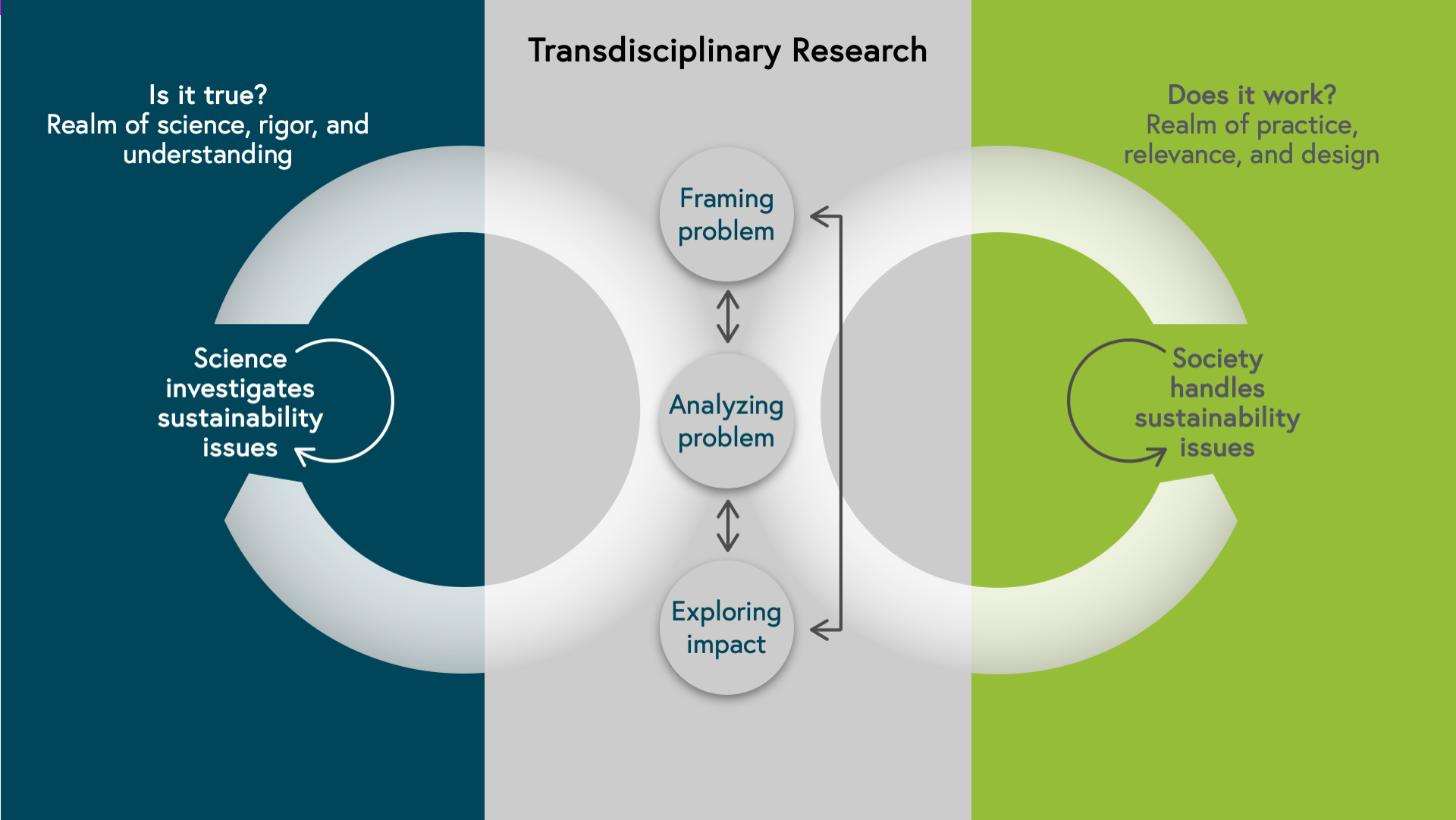SETTING UP A TRANSDISCIPLINARY RESEARCH PROJECT
3.1
The stages of transdisciplinary research
To structure transdisciplinary research (TDR) projects, it is helpful to think in phases. Each phase has specific questions to ask and tasks with which to deal. We structure the TDR process in three phases. This step is a brief overview on the phases and main tasks, more details of each phase are provided in steps that follow. A warm welcome to Chapter 3 of our course!
Phase 1: Problem framing
The first phase of a transdisciplinary project is about jointly envisaging a project and framing goals, problems, and research processes. Main tasks in phase 1 include:
- Jointly identify relevant understandings of the problem situation
- Clarify who to involve – actor and context analysis to find relevant stakeholders
- Matching societal knowledge demand and research questions
- Jointly define achievable project goals
Phase 2: Jointly conducting research
The second phase of a transdisciplinary project is about jointly conducting research. A key challenge is the integration of knowledge and interests. Main tasks in phase 2 include:
- Bringing scientists with different backgrounds and stakeholders together in a structured way to reach the project goals
- Jointly generate knowledge
- Bridging different knowledge and interests (by some called ‘integration’)
- Applying and adjusting methods for knowledge co-production according to the project goals
Phase 3: Jointly explore ways to impact in science and society
In the third phase of a transdisciplinary project, the jointly produced knowledge and practices are fed back into science and society. Main tasks in phase 3 include:
- Jointly reconsider ways to impact
- Jointly develop and test ideas, measures, and solutions
- Jointly evaluate impact

The three phases of transdisciplinary research. (Based on Pohl et al., 2017)
These three phases are overlapping and often addressed in an iterative way. For example, project goals often need to be adjusted or at least specified more precisely during the process when context conditions change, unexpected results are obtained, or new actors join the project. Also, co-designing products and other outputs as well as exploring ways to impact should take place whenever relevant results or other opportunities are emerging.
The course is structured according to these three phases of TDR, starting with phase 1 in Chapter 3. For all theoretical concepts and methods, you’ll find examples of practical applications in the five case studies.
Author: Tobias Buser
Further reading and related link:
Lang, D., Wiek, A., Bergmann, M., Stauffacher, M., Martens, P., Moll, P., Swilling, M., Thomas, C. (2012): Transdisciplinary research in sustainability science: Practice, principles, and challenges. Sustainability Science, 7(1), 25-43.
Swiss academy of sciences (n.d): Search by phases.
